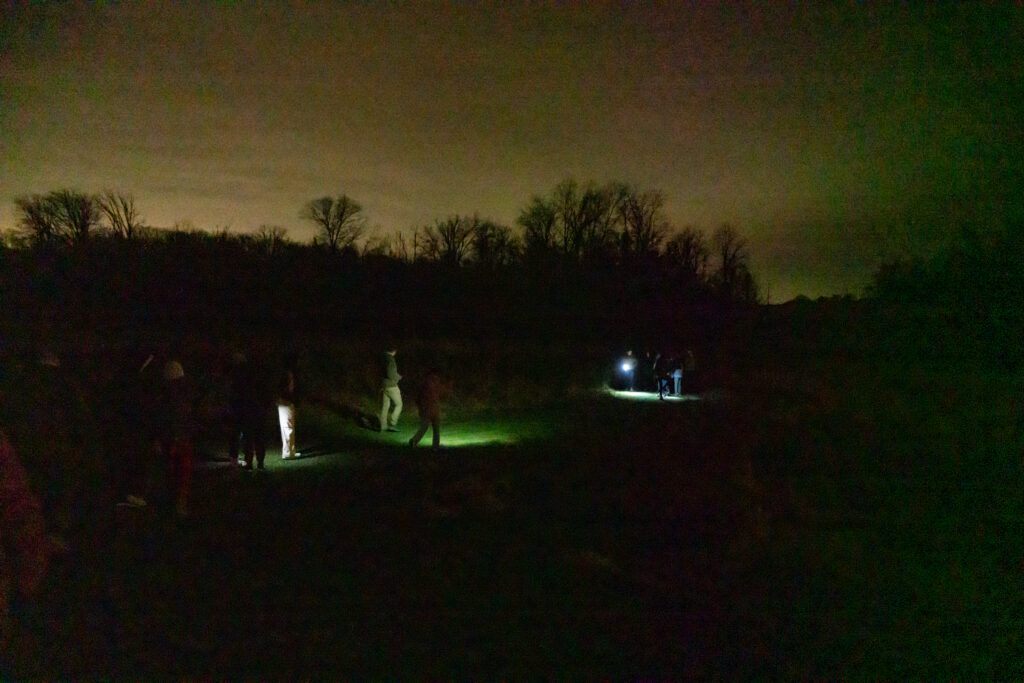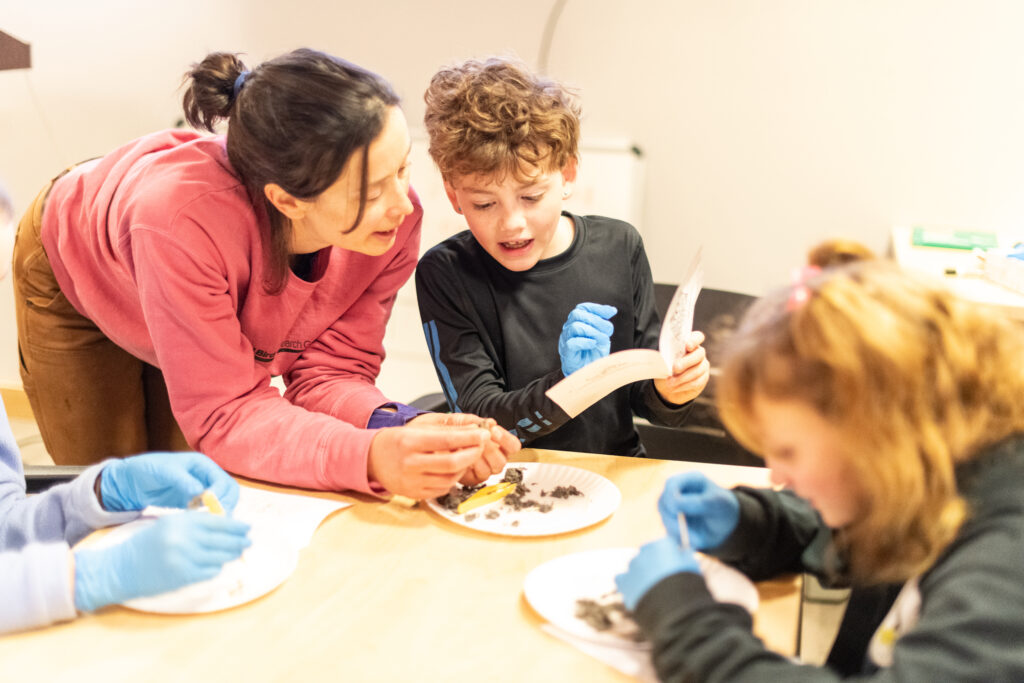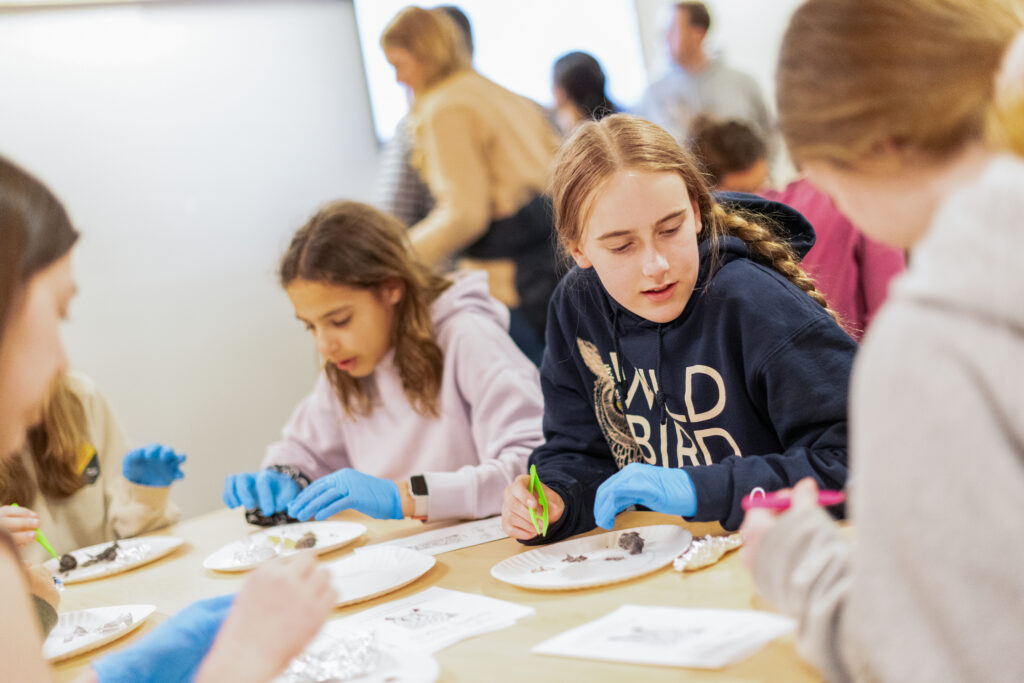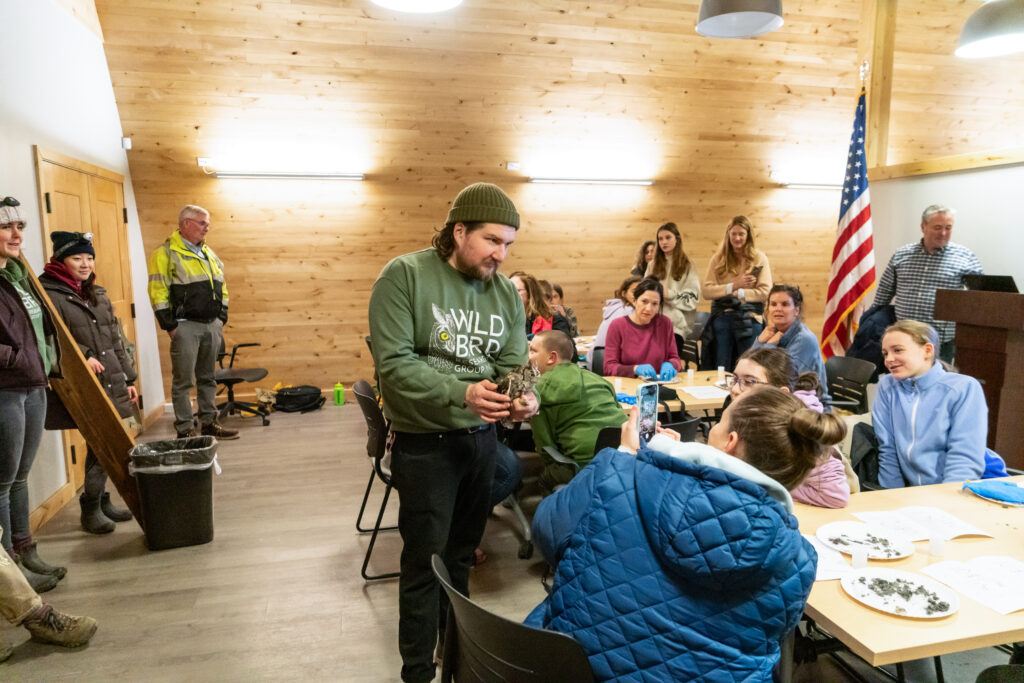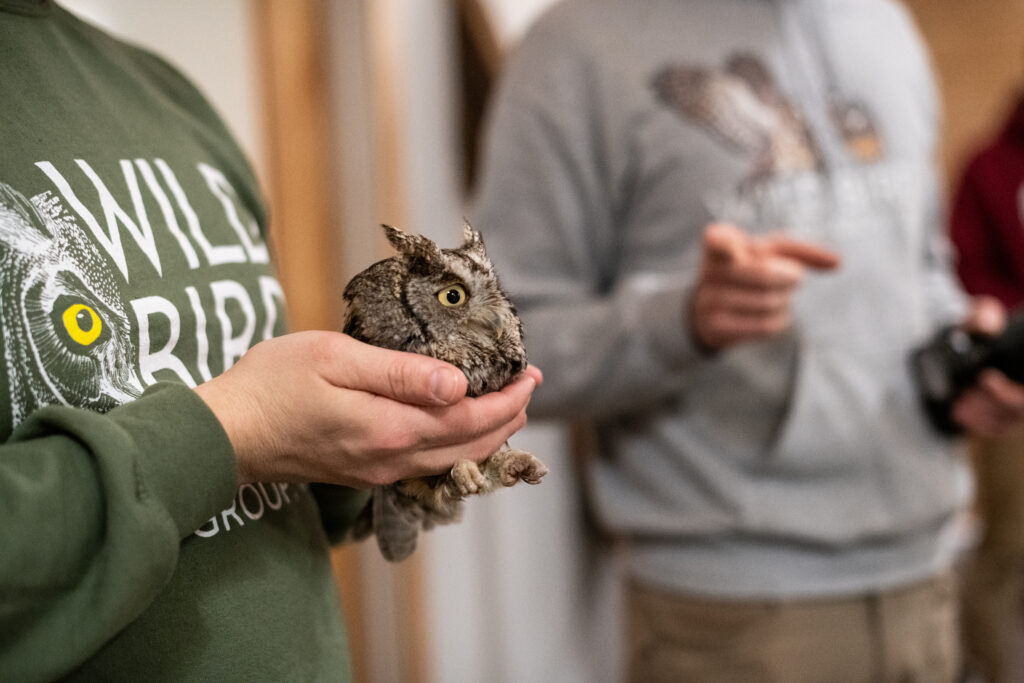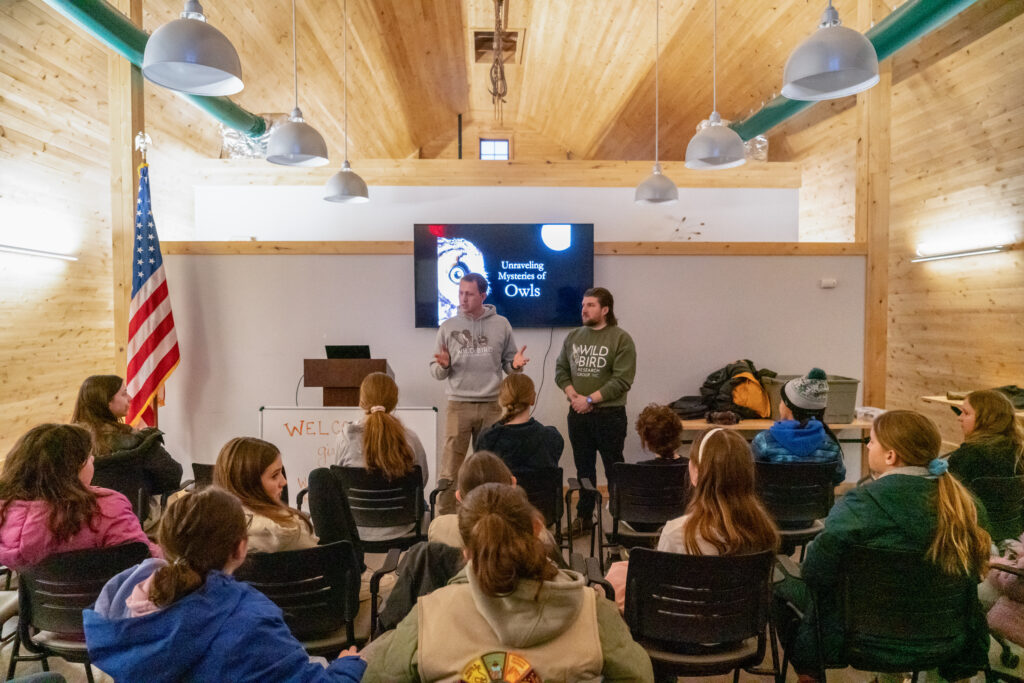
It was nearly sunset, and a local group of Hopewell Valley Girl Scouts had arrived at the Hunt House Barn in anticipation of a night of owls led by Tyler Christensen, Sean Graesser, and the team of Wild Bird Research Group. The air was a still and windless murky gray hinting at the threat of a cold rain, speckled with a distant scent of wood-burning fire. Is it warm or is it cold? Each day in the past seven leaves everyone wondering, “Is it time to put the gloves away, or not?” On Friday, March 22, a group of about 20 Girl Scouts from the local Hopewell area came to a bird banding research station to learn about owls, ecology, habitat, and ground-breaking research being done here in Hopewell, NJ.
As troop leaders, Girl Scouts, and parents arrived, the local non-profit organization Wild Bird Research Group, Inc. orchestrated the evening with a slide presentation, owl prowl, and hopefully, with a little bit of March luck, an owl. It was a night filled with questions. Would we see an owl? Would we hear an owl? Would we be lucky enough to catch an owl? And how, just exactly, do you “catch” an owl anyway? Using techniques regulated and overseen by the US federal government, technicians at Wild Bird Research Group have a specific system, as it’s quite complicated to catch wild birds.
All those questions, and more. Like, what kind of Yo-Yo is Mother Nature tossing our way as the weather pulls the flowers up from their stupor at 65 degrees a few days ago, only to plunge back down again into the chilling twenties? That kind of day where the sky’s clouds look like a painting and a harbinger of the push and pull of winter reluctantly releasing itself to spring. Perhaps, a boon. As some species of birds are reluctant to begin their migrations.
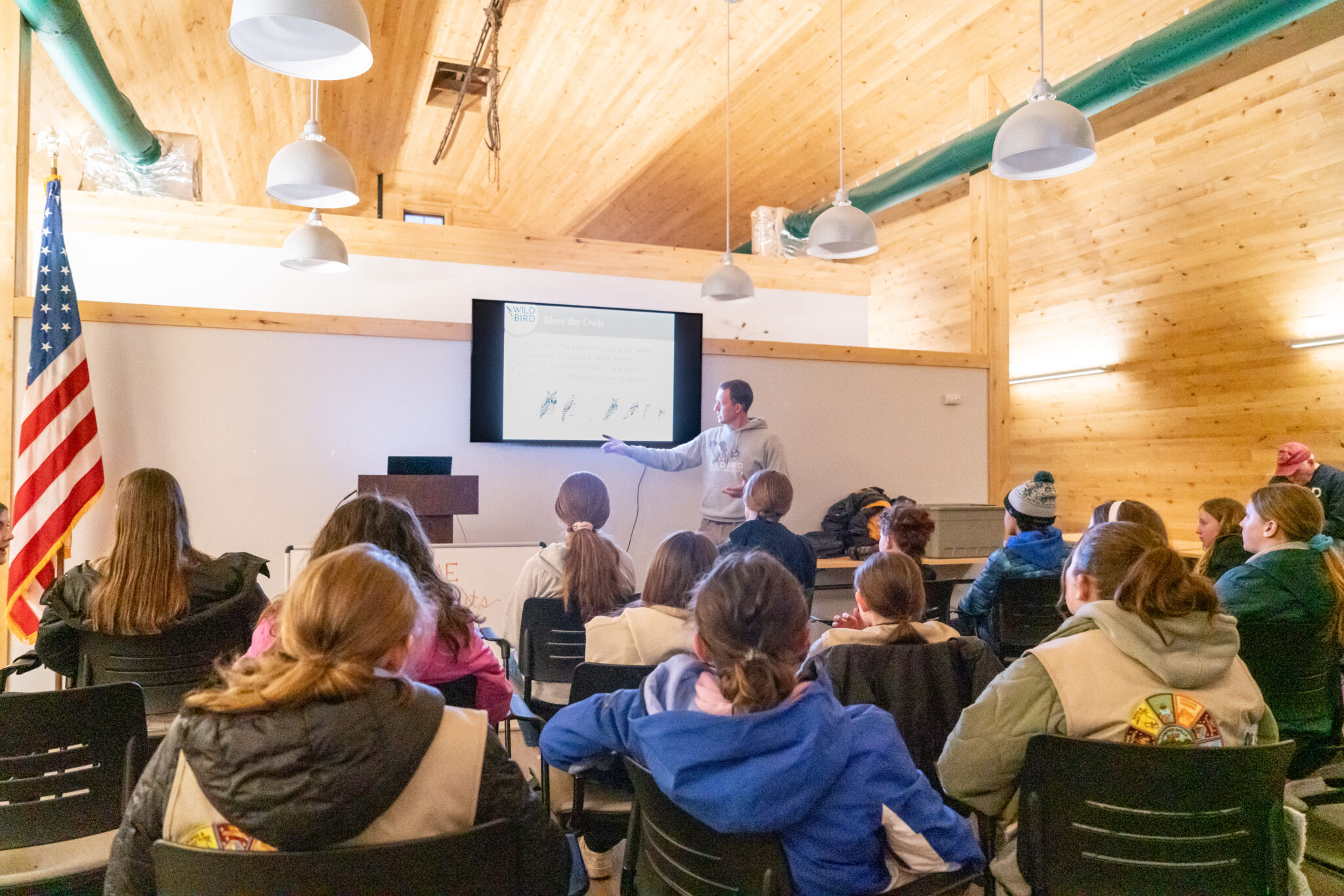
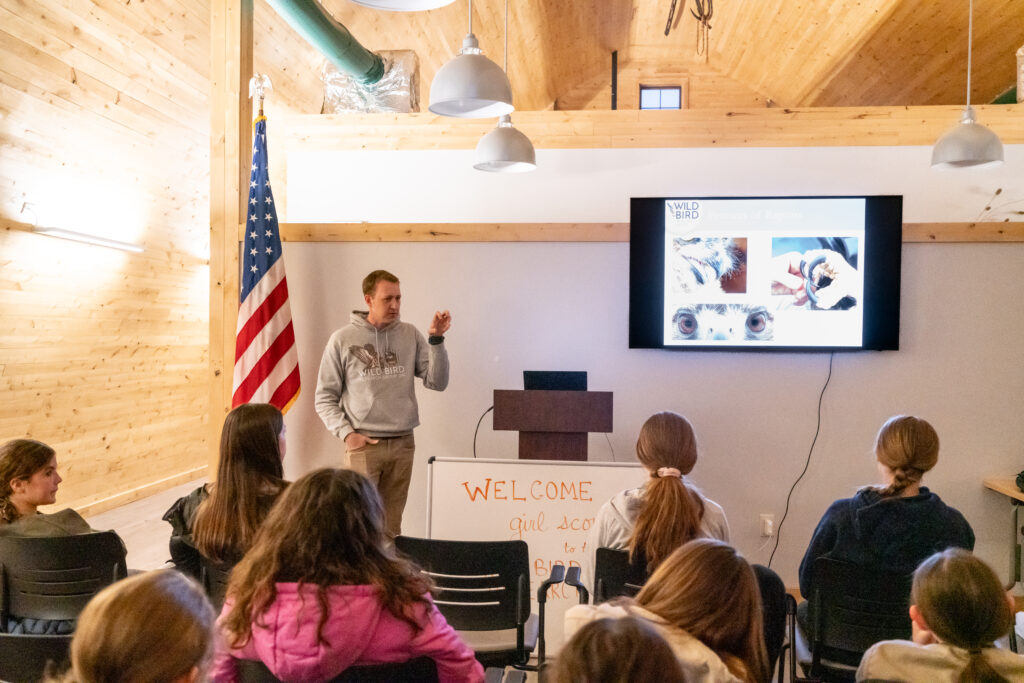
Lemmings and voles and shrews oh my!
Once setted, the Girl Scouts (aged middle and high school) quickly began learning about the fascinating anatomy of owls, and how their otherwise “awkward teenage” stage of early downy feathers are quickly covered up with plumage that not only (in some cases makes them completely camouflaged) but also keeps them warm in their environment. How their unique fixed eyes and their asymmetrical hearing (for some species) make them expert nocturnal hunters. Yet, not all owls are nocturnal. And those little tufts on top of their heads that give them the name of “Great Horned” or “Long Eared”… those in fact are not ears or horns they learned!
From right out of the Rawlings’ text, Hedwig, or the Snowy Owl is the largest of the NJ owls, but there are 8 more species of owls that reside in NJ of the some 250 species of owls in the world.
In size order in the NJ area, they are: Snowy Owl, Great Horned Owl, Long-Eared Owl, Barred Owl, Barn Owl, Short-Eared Owl, Eastern Screech Owl, Northern Saw-Whet Owl. The largest weighing in at about the weight of a brick, while the smallest, about the same as a stick of butter.
Owls are simply fascinating.
And the stir about the room was that of interest and curiosity. Girl Scouts asked really good questions, and the night had really only begun. They learned about diet, habitat, and the variety of nest site selections depending on the type of owl. But to really get to know something, is to see it up close and personal.
Back into their jackets, the Girl Scouts made their way outside to an owl prowl. A small speaker played the sounds of male and female Great Horned owls dueting, to familarize the scouts with what they would be listening for. In the distance a distant pack of coyotes offered up their two cents, but no owls yet. The group walked a little farther down the pathway towards a trail, and the perfect silhouette of a Great Horned Owl was perched on a snag. The group of scouts was able to witness not only the bird perched but also it flying with silent grace to another perch about 200 yards away, landing on a branch that sagged and dipped under the weight of the bird. The group finished up the owl prowl and headed back into the warmth of the building, where a bit of hands-on science awaited them.
Each scout was able to carefully dissect an owl pellet, and in doing so, discovered what was eaten based on clues in skull shape and size amid the tiny pile of bones and fur. A tally was kept as well to see which rodent species was the most sought after, or most abundant. The white-footed mouse, the shrew, or the vole. The questions continued from the two dozen scouts in the room, but were abruptly interrupted at once.
